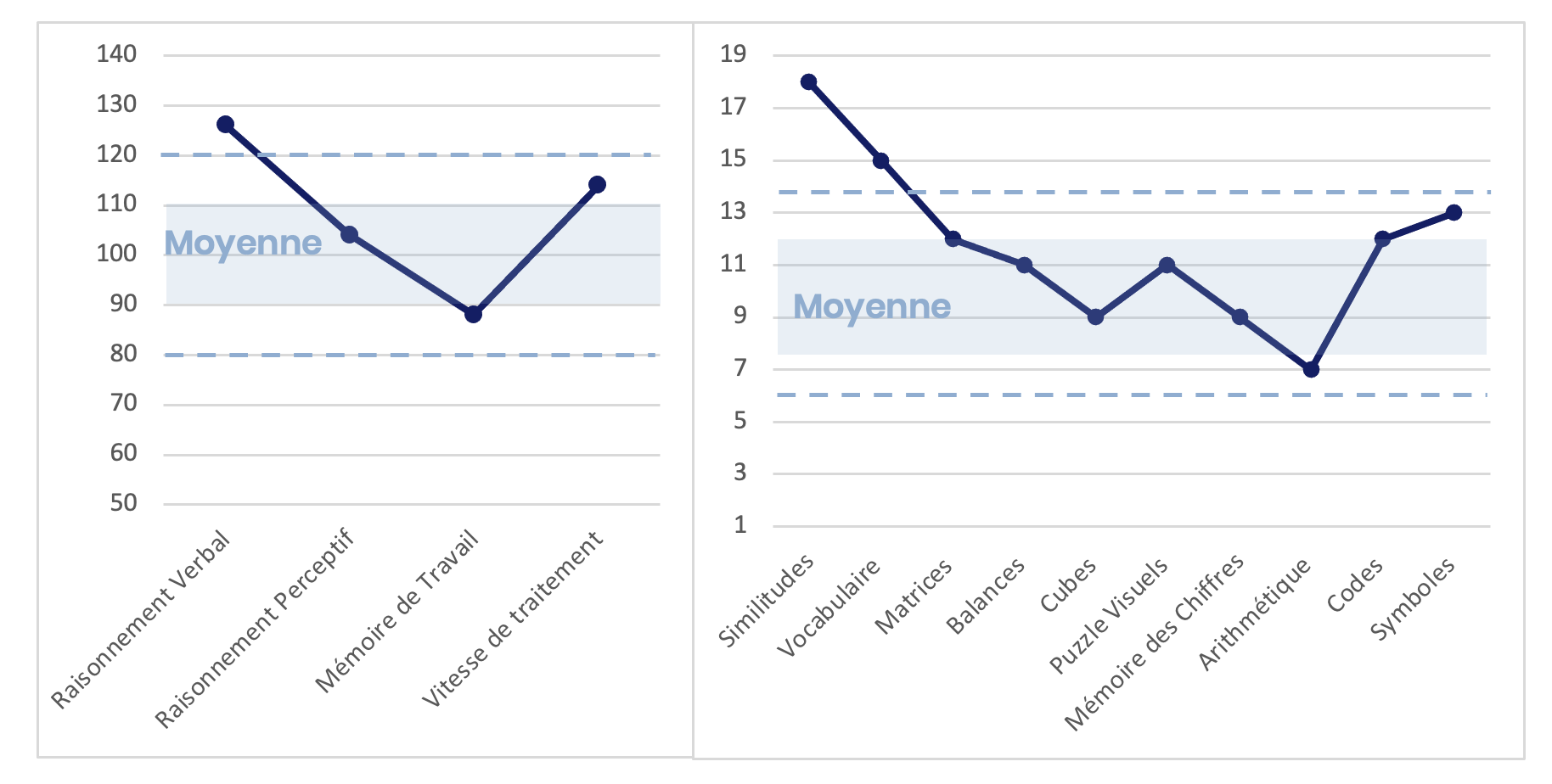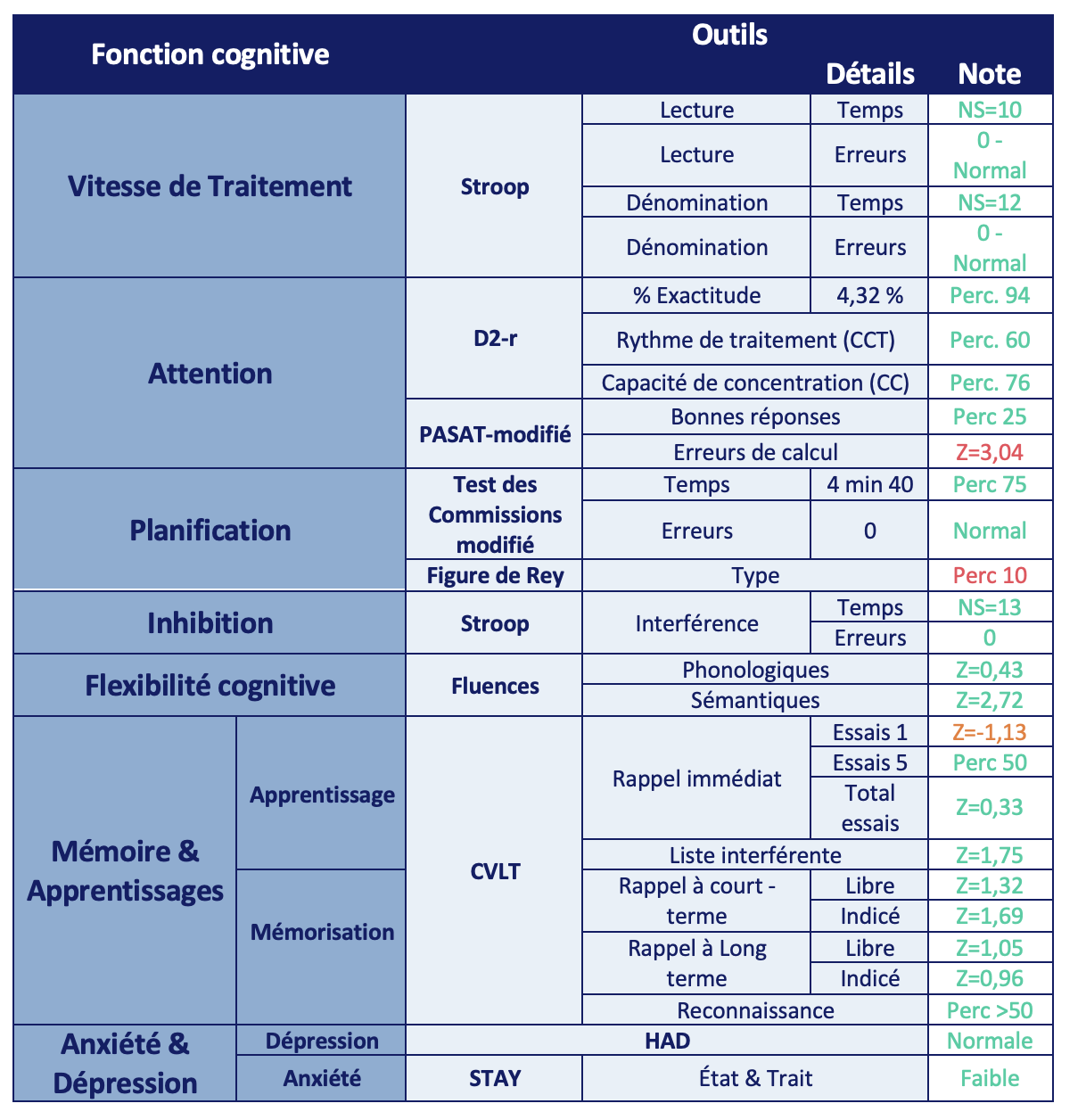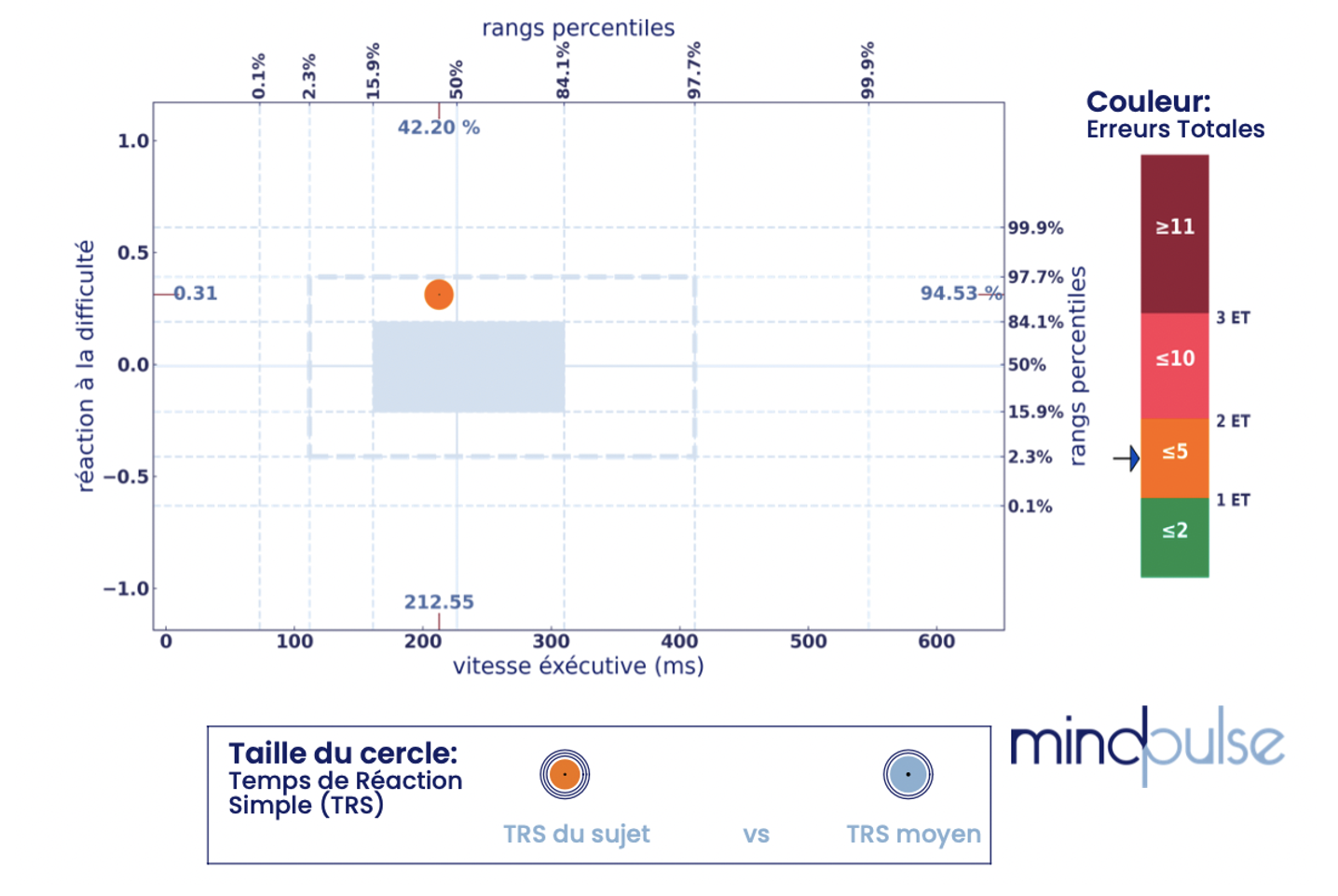Clinical case : Mrs. I, 53 years old, TIA
Context : Mrs. I, aged 53, was the victim of a suspected TIA 6 years ago, nothing showed up in the imagerie, however the clinical symptoms were apparent. Since then, she had strong attentional and executive complaints and had to significantly modify her professional activity as a result (reduced working time and professional reclassification). Despite this, she expressed severe fatigue and a feeling of being overwhelmed in her daily life.
Mrs. I has a high level of education, has no thymic disturbances, sleep disorders nor history apart from this TIA episode.
Mrs. I is an excellent contact, but shows an alarming fatigue. It is necessary to take many breaks, she makes colossal efforts to maintain her attention and stay mobilized effectively on the various events. Mrs. I implement excellent compensation strategies, but they are very costly to her. We note her perseverances, difficulties of flexibility, which are found punctually throughout the results.

WAIS-IV : it highlights a heterogeneous quality of functioning, ranging from the upper/very upper zone for the verbal comprehension index (VCI) to the low average for the working memory index (WMI). The patient presents an excellent level of functioning with however a fragility in working memory which seems mainly related to attentional and executive difficulties during the passing of the tests. Although within the norm, this area contrasts drastically with the rest of Ms. I's performance, and highlights an atypicality in these specific functions.
Test FEA : The classic tools used in neuropsychology (Stroop, D2-r; PASAT; commission test, verbal fluences, etc.) were used to evaluate Mrs. I's executive functioning. However, her performance remains average apart from some exceptions, despite difficulties that appear evident in the analysis and clinical observation.
Mrs. I is exhausted at the end of each test from the extreme concentration. She works with all her might to provide a cognitive effort and compensate for her difficulties, which is effective from a psychometric point of view, but cannot be sustained over time or in her daily life. This effort is atypical, especially given the intellectual level of Mrs I, and contrasts with her previous functioning which is not found psychometrically in these tests.



MindPulse highlighted a particularly fast perceptual motor speed in Mrs I (TRS: z=-1.24), without slowing down of executive speed (z=-0.20) which appears to be average. On the other hand, Mrs I made too many errors, which therefore remain borderline (z=1.43), with an adjustment to the difficulty highlighting an over-slowdown in this patient, which is generally observed in anxious patients (RD : z=1.60).
The executive and attentional balance appears disturbed, with an alteration of vigilance, which results in an atypical number of aberrant responses (z=1.20) and a high attentional variability during the different tests (z=1.93) highlights the difficulty for Mrs I to maintain a constant level of attention over time. Executive control also appears Executive control also appears to be altered as a whole, with a very particular impairment of inhibition with strong impulsivity (z=1.75) which is highlighted via anticipated responses at the start of each test.

Conclusion : Mrs. I presents an excellent quality cognitive functioning with a verbal overinvestment which appears in that zone which is much higher than the average patient who presents a fragility in working memory (which remains in the low average). The difference observed is very significant of a more general executive fragility, which is difficult to observe through the insensitive tests traditionally used in Neuropsychology.
Indeed, Mrs. I presents an alteration of the general executive control which however appears moderate compared to the reference population. But she is very much out of step with her capacities elsewhere, which perfectly illustrates the complaint and the feeling of slowing down and difficulty of this patient on a daily basis as well as in her work. A very significant fatigability is also observed with significant overflow and saturation effects. The patient is quite capable of mobilizing and providing satisfactory performance, but at the cost of an atypically high effort that she cannot maintain over time and whose repercussions persist over time.
The MindPulse makes it possible here to objectify, quantify and qualitatively characterize Mrs I's complaint by going in the direction of the clinical observations made during the evaluation, where the usual tools did not make it possible to highlight any disturbance given the Mrs. I's high level of past functioning and her excellent compensation strategies.
Moreover, it is also the only tool to characterize the dynamic balance between executive and attentional functions by including a measure of reaction to difficulty.
